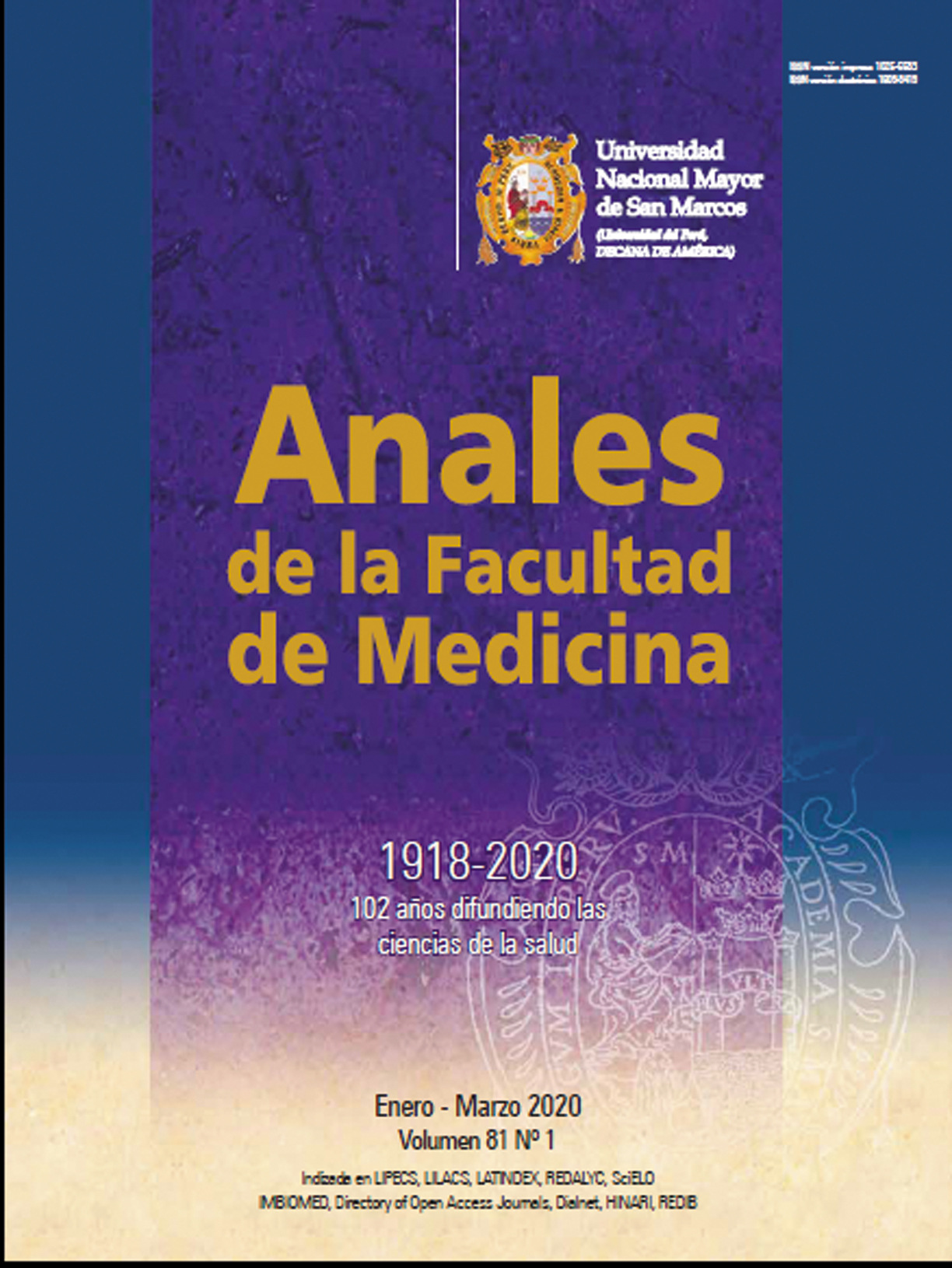Hantavirus antibody frequency in rice farmers from a tropical region in northeast Peru
DOI:
https://doi.org/10.15381/anales.v81i1.17155Keywords:
Hantavirus, Hantavirus Infections, Serology, Farmers, PeruAbstract
Introduction. There is little evidence of hantavirus exposition in Peru. Cases and seroprevalence studies in febrile and asymptomatic persons are from Loreto region; however, there are occupational groups exposure to reservoirs in areas without know virus circulation. Objectives. To determinate the frequency of antibodies against hantavirus in rice farmers of a valley in a subtropical area of Peru. Methods: Cross-sectional study in a random sample of 250 rice farmers enrolled in 2010 in Alto Mayo Valley (San Martin region) that included blood sample obtention, in whose serum the presence of IgG antibodies was determined by indirect ELISA, and IgM antibodies by capture ELISA. Results: We identified a case with IgM antibodies (0,40%, 95% CI: 0,01 to 2,21), we did not find farmers with IgG antibodies. The case had frequent contact with rats and rodents in the home and crop field. Conclusion: We show the first serological evidence of hantavirus infection in the San Martin region.
Downloads
Published
Issue
Section
License
Copyright (c) 2020 Anales de la Facultad de Medicina

This work is licensed under a Creative Commons Attribution-NonCommercial-ShareAlike 4.0 International License.
Those authors who have publications with this magazine accept the following terms:
- Authors will retain their copyrights and guarantee the journal the right of first publication of their work, which will be simultaneously subject to Creative Commons Attribution License that allows third parties to share the work as long as its author and its first publication this magazine are indicated.
- Authors may adopt other non-exclusive licensing agreements for the distribution of the version of the published work (eg, deposit it in an institutional electronic file or publish it in a monographic volume) provided that the initial publication in this magazine is indicated.
- Authors are allowed and recommended to disseminate their work over the Internet (eg: in institutional telematic archives or on their website) before and during the submission process, which It can produce interesting exchanges and increase quotes from the published work. (See El efecto del acceso abierto ).



